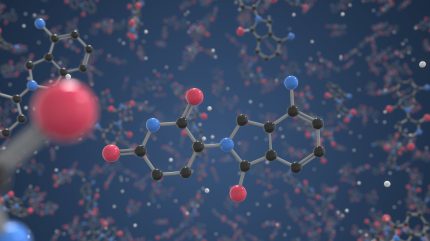
February’s announcement that Novo Nordisk was partnering with a biotech developing molecular glues to treat rare diseases was the latest in a series of expensive deals hoping to utilise the nascent technology.
Since their discovery in the early 1990s, molecular glues have become a promising areas of development in the oncology and rare diseases space, though “the potential breadth of […] applications is almost unlimited,” according to Sasso, Tenchov et al. The power of these small molecules lies in their ability to bind degradation enzymes to otherwise untargetable proteins by altering their shape, enabling targeted protein degradation (TPD).
Currently, the most popular molecular glues on the market are immunomodulatory imide drugs (IMiDs), a class made up of thalidomide and its less harmful analogues; notably lenalidomide, which saw over $6bn in sales in 2023, according to GlobalData. These drugs are currently used only to treat a small range of blood cancers and autoimmune conditions, so the sales potential for other indications remains high.
GlobalData is the parent company of Pharmaceutical Technology.
The TPD market as a whole saw a 2,000% increase in the value of venture financing deals in 2022, but not all of this went to molecular glues. The other main category of TPDs are proteolysis-targeting chimeras, or PROTACs. These achieve a similar effect to the glues but act as a linking rather than a binding agent. This still creates the proximity required for the E3 enzyme to interact with the target protein but means that each PROTAC has to be designed with a specific protein in mind.
PROTACs are therefore comparatively less complex to manufacture, but also more limited in scope, as each one will typically only work for a clearly determined set of proteins as opposed to the “wide range of targets difficult to accurately predict a priori, exhibiting distinct biological activities,” of molecular glues.

US Tariffs are shifting - will you react or anticipate?
Don’t let policy changes catch you off guard. Stay proactive with real-time data and expert analysis.
By GlobalDataIn the same paper, Dong et al. report that “It is estimated that molecular glues could promote interactions between approximately 600 human E3 ligases and more than 20,000 potential human target proteins, providing a rich resource for exploring new targets and potential small-molecule drugs,” making the business case for investing in these drugs clear.
The recent shift in investment from PROTACs to molecular glues not only shows confidence in their potential but also reflects an increasing trend of huge spend on potential multiuse drugs. Novo Nordisk went from a relatively niche company focused on diabetes to the 13th largest company in the world on the back of its blockbuster GLP-1RA drugs, which are also proving to have a highly varied set of indications.
Another potential hope for new molecular glues comes in the form of artificial intelligence (AI). Historically, they have been discovered serendipitously, but advancements in automated drug discovery might enable a more rapid development by evaluating millions of potential formulations far faster than humans could. Bristol Myers Squibb is banking on this potential, partnering with tech startup VantAI to design and develop molecular glues to the tune of $674m just weeks before Novo’s deal.




